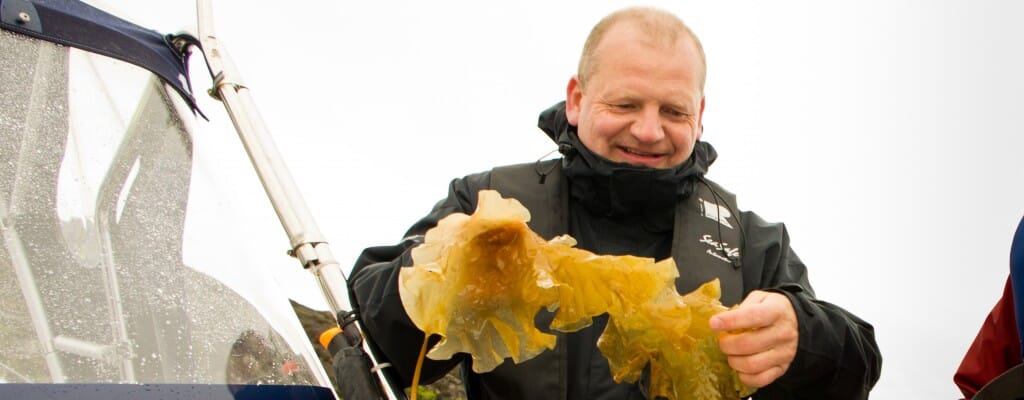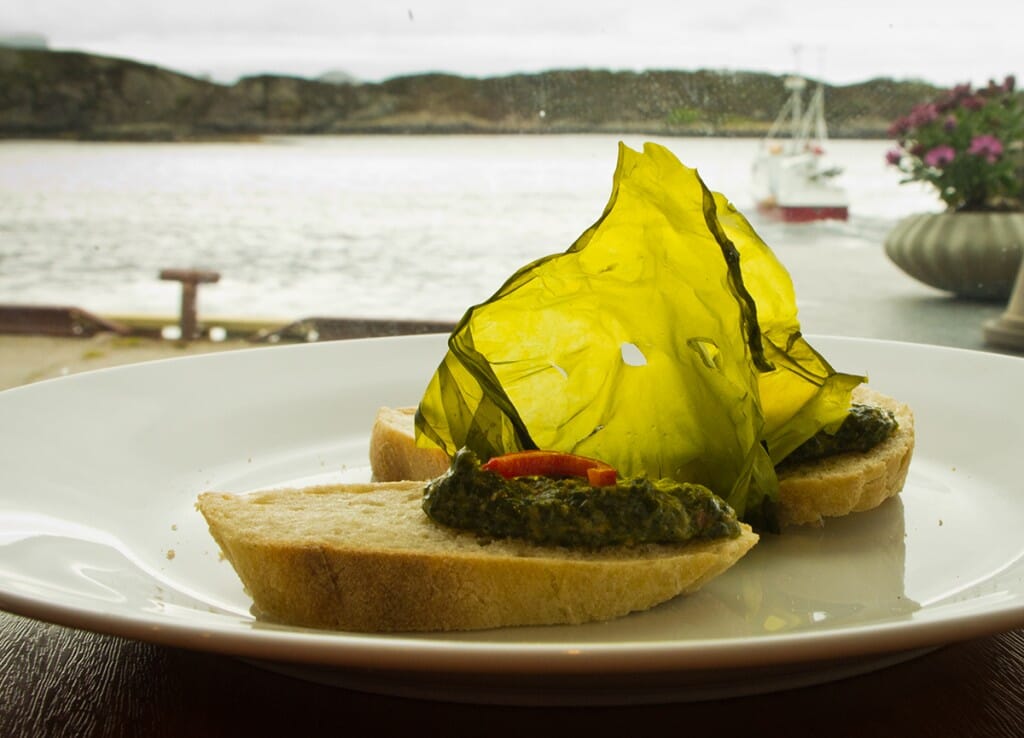Daniel Fedøy hangs over the gunwale with a lap full of kelp.
“These have grown immensely in recent months,” Fedøy says. He is general manager of Seaweed AS, one of the companies focusing on commercial kelp farming.
Kelp can be used for both feed, fertilizer and bioenergy. But Fedøy and Seaweed are thinking food: Why not just eat the kelp as it is, with all of its great nutrients?
Nutritious innovation
Kelp is very rich in minerals and vitamins, including B12, which vegetarians and vegans need. Protein in kelp has a higher content of essential amino acids than plants grown agriculturally. Kelp may also have medical properties such as an antibiotic effect, strengthening the immune system and reducing cholesterol.
Even though winged kelp grows well on the ropes, there is much to consider along the way from kelp in the sea to the dinner table. Which type of kelp? How should the kelp farmers process it? What will the gourmet chefs, the commercial kitchens and the food industry want?
To answer these questions, Seaweed joined Norges Vel and researchers from Nofima, Sintef fisheries and aquaculture and NIFES on a research project that was funded by Regional Research Councils of Norway, West.
When both the ocean farmer, biologist, biochemist, thermodynamics expert and product developer are sitting in the same boat at the kelp field, the goal is to form the basis for bringing kelp to the dinner table to a greater degree, and in completely different forms, than today.

Food for researchers
“This is fun. On this project I can apply all of my knowledge,” theoretician Dagbjørn Skipnes of Nofima smiles. He is a graduate engineer, thermodynamics expert and holds a Ph.D on the heat treatment of cod. They discuss the processing line, and the researcher has plenty of suggestions. How should one wash, cut, package? How large should the packages be?
“We don’t quite know which machines are required yet, it depends on how one wants to produce it. Should they freeze it in blocks or freeze single portions? It’s difficult to pack whole leaves. What about canning? Pickling? Drying?” the researcher suggests.
The kelp product will be carefully examined to ensure high food quality. Among other things, the researchers will assess the colour of the kelp. A bright, clear and green colour is more appetizing than a dark brown. Texture is also important when kelp becomes food. It must be good to chew – neither tough nor limp.
The stowaways
New to the team is environmental and energy engineer Marthe Jordbrekk Blikra, who is a student at the University of Stavanger. In the next year she will write a master’s thesis in biochemistry at Nofima on which micro-organisms accompany the kelp up from the sea. She is itching to start studying the micro-organisms. Some of them disappear when the kelp is washed. Some are killed by freezing, others during heat treatment.
“I like the kelp project because it’s sustainable and ecological. They use a resource that doesn’t put a strain on the environment,” she says.
Since there are no regulations on threshold values for foreign substances in kelp, there is much work to be done in analysing and assessing risk factors, such that one may ensure production of safe raw materials and food. Blikra will submit her report in June 2016.

Vegetables of the sea
Just next to the production premises is the Havsalaten café. In the kitchen Gunhill Sæle-Bjørkhaug is making carrot soup on a kelp stock. With inspiration from the chefs at Norsk Sjømatsenter she has developed some of her own kelp recipes, including various pestos.
Delicious, small canapés with a green kelp seal await hungry researchers and entrepreneurs. If the project succeeds, there is a great chance that delicious kelp food will appear on Havsalaten’s menu.
Kelp products
Commercial kelp farming is a new thing in Norway, and around ten businesses are getting into it. So far none of them grow kelp for food through regular sales channels in Norway. However, forecasts for Seaweed look promising, and interest in the products is on the rise.
“National TV interviewed us on the business. ‘Profit from kelp’ was the headline. Well – that’s still some way off,” the entrepreneurs admit. However, Seaweed is first out of the blocks, the business has a dream team to support it, and the following day a chef called from Brimiseter wanting kelp.
They thought the market wanted chopped leaves. But then it proved that the gourmet chefs want sheets. There will be a lot of trial and error going forward.
Along with the project participants, in the year ahead they will improve farming techniques, ensure food security, and develop the market, so that kelp products are adapted to those who want to buy them.
